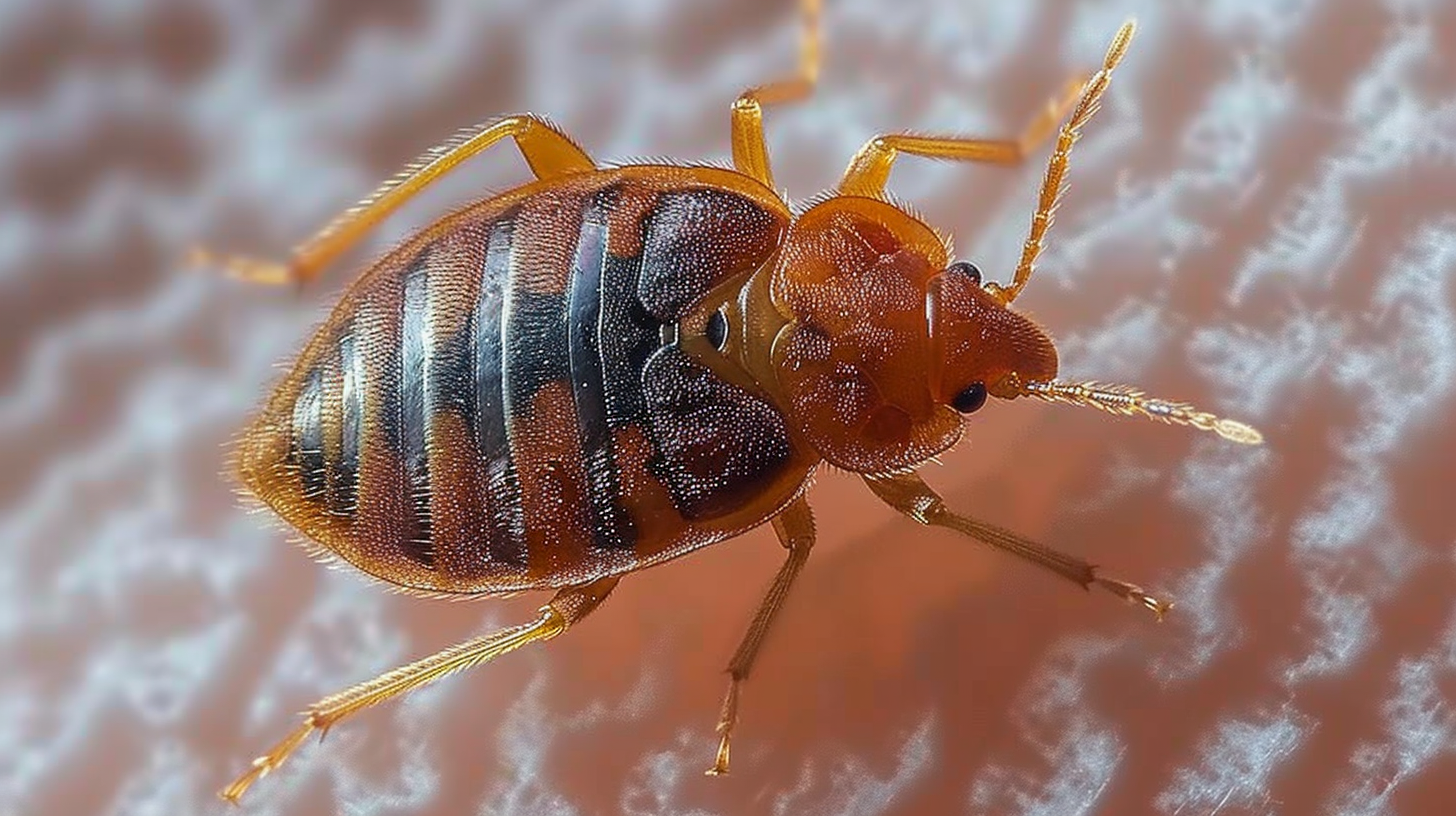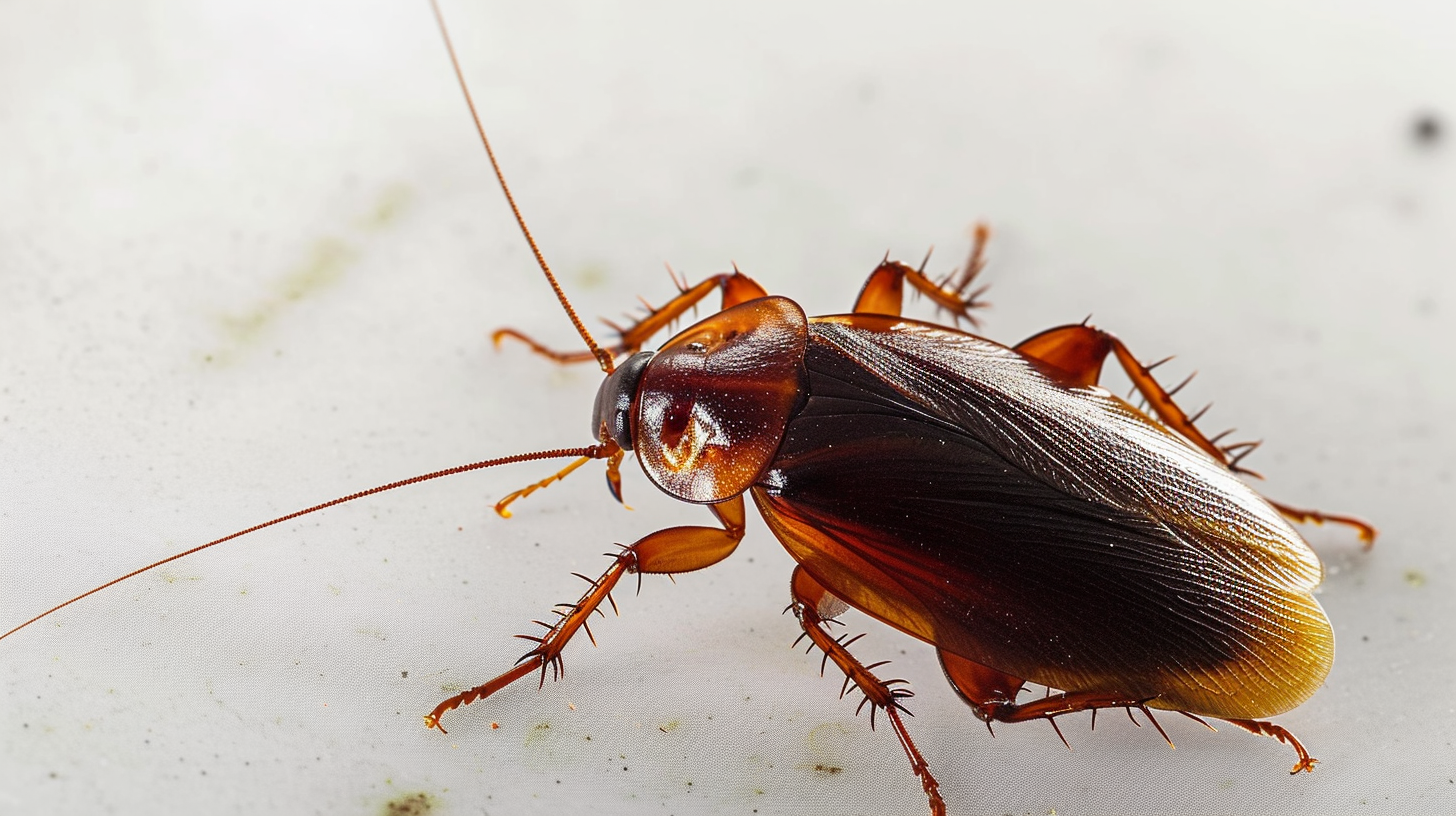Common Household Pests
Explore solutions and insights for tackling the most common household pests, from tiny insects to stealthy rodents.
| Pest | Scientific Name | Control Methods |
|---|---|---|
| Ant | Formicidae | Bait stations, insecticides, sanitation |
| Bed Bug | Cimicidae | Heat treatment, insecticides, vacuuming, encasements |
| Cockroach | Blattodea | Insecticides, traps, sanitation, sealing entry points |
| Flea | Siphonaptera | Insecticides, vacuuming, pet treatment |
| Mouse | Mus Musculus | Traps, rodenticides, sealing entry, sanitation |
| Rat | Rattus | Traps, rodenticides, sealing entry, sanitation |
| Silverfish | Lepisma saccharina | Insecticides, dehumidifiers, sealing food |
| Termite | Isoptera | Chemical barriers, bait systems, fumigation |
| Tick | Ixodoidea | Insecticides, landscaping, tick repellents |
| Beetle | Coleoptera | Insecticides, physical removal, sanitation |
| Cricket | Grylloidea | Insecticides, sealing entry points, reducing moisture |
| Spider Cricket | Rhaphidophoridae | Insecticides, glue traps, reducing moisture |
| Earwig | Dermaptera | Insecticides, traps, reducing moisture |
| Lice | Phthiraptera | Topical treatments, combs, laundering |
| Moth | Lepidoptera | Pheromone traps, vacuuming, cleaning |
| Scorpion | Scorpiones | Insecticides, sealing entry points, reducing hiding spots |
| Stink Bug | Pentatomidae | Vacuuming, sealing entry points, insecticides |
| Centipede | Chilopoda | Insecticides, reducing moisture, sealing entry points |
| Millipede | Diplopoda | Insecticides, reducing moisture |
Ant

Ants are easily identified by their distinct segmented bodies and tendency to form trails. For effective control, consider using bait stations and specific insecticides that target ants. To prevent infestations, focus on sealing entry points in walls, foundations, and around windows. Regular cleaning to remove food remnants and managing indoor moisture levels are also key in deterring these persistent pests.
Bed Bug

Bed bugs are small, oval, and brown, often found in mattress seams, furniture joints, and behind baseboards. To control bed begs, use targeted methods like comprehensive heat treatment and specially formulated insecticidal sprays. Preventive measures include regular inspection and cleaning of bedding, furniture, and luggage, especially after travel. Using mattress encasements can also help in early detection and prevention of these elusive pests.
Cockroach

Cockroaches, with their oval bodies and rapid movement, are commonly found in kitchens and bathrooms. Effective cockroach control involves the use of bait stations, gel baits, and insecticides with residual effects. Preventive strategies include maintaining a clean and clutter-free home environment, promptly fixing water leaks, and sealing cracks and gaps in walls and floors. Ensuring proper ventilation and reducing humidity can also significantly deter cockroach infestations.
Flea
Fleas are tiny, dark-colored parasites that jump from host to host, often identified by their bites on pets and humans. Control fleas by treating pets with veterinarian-recommended products, and using flea-specific insecticides in infested areas. Regular vacuuming and washing of pet bedding can help remove eggs and larvae. To prevent flea infestations, maintain a clean environment, treat pets regularly with preventive flea treatments, and consider treating outdoor areas where pets frequent.
Mouse
Mice are small rodents with pointed noses and long tails, often detected by droppings or gnawed food packages. Mouse control involves setting traps or using poison baits, focusing on areas where activity is noticed. Seal entry points like cracks in walls or gaps around doors to prevent access. Prevention also includes keeping food in sealed containers and maintaining a clean, clutter-free environment to reduce hiding places and food sources.
Rat
Rats are larger than mice, with thicker bodies and blunter noses, often leaving grease marks and large droppings. Rat control requires robust methods like snap traps, live traps, or poison baits, placed in areas of high activity. Sealing entry points is crucial for prevention, along with removing outdoor attractants such as pet food or garbage. Keeping the home and surrounding areas clean and clutter-free also deters rats by reducing food sources and nesting sites.
Silverfish
Silverfish are small, wingless insects with a silvery-grey color and a distinctive, fish-like appearance. They are often found in damp, dark areas like bathrooms and basements. To control silverfish, reduce humidity in these areas by using dehumidifiers or improving ventilation. Insecticidal dusts and traps can also be effective. Prevent infestations by sealing cracks and crevices in walls, storing books and papers in dry, airtight containers, and regularly vacuuming to remove any eggs.
Termite
Termites are recognized by their segmented bodies and tendency to form colonies, often detected through their wood damage or mud tubes. Effective control typically requires professional treatment, which may include soil treatments, bait systems, or direct wood treatments. Prevent termite infestations by reducing soil-to-wood contact around your home, keeping woodpiles and debris away from the house foundation, and ensuring proper drainage to prevent moisture accumulation near wooden structures.
Tick
Ticks are small, blood-sucking arachnids, identifiable by their flat, oval bodies and tendency to attach to hosts. For tick control, use repellents on skin and clothing, and conduct regular tick checks after being outdoors. In your yard, keep grass trimmed and create barriers with gravel or wood chips to deter ticks. To prevent tick infestations, treat pets with veterinarian-recommended tick control products and consider treating your yard with appropriate acaricides, especially if you live in tick-prone areas.
Beetle
Beetles come in various shapes and sizes, but are generally identified by their hard exoskeletons and wing cases. Control methods depend on the beetle type, but often include removing the food sources they are attracted to, using traps, and applying insecticides where necessary. To prevent beetle infestations, keep your home clean, especially in areas where food is stored, and seal cracks and crevices to deny them entry. Regularly inspect and clean areas where beetles are likely to reside, such as pantries or storage rooms.
Cricket
Crickets are recognized by their long antennae and distinctive chirping sound, usually occurring in warm, dark, and moist areas. Control can be achieved by reducing moisture in and around your home, using sticky traps, and applying insecticides in targeted areas. Prevention includes sealing entry points like gaps around doors and windows, maintaining a well-kept yard to reduce habitat, and keeping basements and crawl spaces dry and well-ventilated.
Spider Cricket
Spider crickets, or camel crickets, are characterized by their humpbacked appearance and long, spider-like legs. They are often found in damp, dark environments. Spider cricket control involves reducing humidity with dehumidifiers, using sticky traps, and sealing entry points. Prevent spider crickets by fixing leaky pipes and faucets, removing piles of debris where they might nest, and keeping basements, garages, and crawl spaces dry. Regular cleaning and clutter reduction can also help minimize their presence in your home.
Earwig
Earwigs, identifiable by their pincers and elongated bodies, are often found in moist areas. Control includes reducing moisture around the home, using traps, and applying insecticides in areas of infestation. To prevent earwig invasions, create a dry border around your home by removing mulch or leaves, seal cracks and crevices in the exterior, and ensure proper drainage away from the foundation. Keeping the garden and outdoor areas well-maintained can also deter earwigs from settling near your home.
Lice
Lice are tiny, wingless parasites found on the human body, known for their intense itching. Effective control involves using over-the-counter or prescription treatments, thoroughly washing infested clothing and bedding, and combing hair with a fine-toothed comb to remove nits. To prevent lice infestations, avoid sharing personal items like hats and brushes, and maintain good personal hygiene. Regularly washing and changing bed linens can also help prevent a recurrence.
Moth
Moths, particularly clothes and pantry moths, can be identified by their fluttering flight and presence in closets or kitchens. Control clothes moths by cleaning and vacuuming wardrobes and drawers, and using moth repellents like cedar or lavender. Pantry moths can be controlled by storing food in airtight containers and regularly cleaning pantry shelves. To prevent moth infestations, inspect and clean incoming items like vintage clothing or second-hand furniture and keep pantry goods in sealed containers to deter these pests.
Scorpion
Scorpions, known for their curved tails with a stinger, are often found in dry, warm climates. Control involves eliminating their hiding places like debris and rocks, using insecticides specifically designed for scorpions, and sealing entry points in the home. To prevent scorpion infestations, keep the yard clear of clutter, ensure windows and doors are tightly sealed, and use weather stripping to block their access. Removing excess moisture around the home and using yellow outdoor lighting can also deter them.
Stink Bug
Stink bugs are identified by their shield-shaped bodies and the unpleasant odor they emit. Stink bug control methods include hand-picking them off plants (without crushing them), using soapy water as a trap, and applying insecticides where necessary. Preventing stink bugs from entering the home is key; seal cracks around windows, doors, and the home’s foundation. Regularly inspect and maintain screens on windows and vents to keep them out.
Centipede
Centipedes, with their long bodies and numerous legs, prefer moist and dark environments. Control can be achieved by reducing humidity in the home, sealing cracks and crevices, and using sticky traps. To prevent centipede infestations, eliminate moisture sources such as leaky pipes, use dehumidifiers in damp areas like basements, and clear out clutter where they might hide. Keeping a clean, dry environment is essential in deterring them.
Millipede
Millipedes, recognizable by their long, worm-like bodies and many legs, are generally found in damp, dark places. Control involves reducing moisture both inside and outside the home, using barriers like diatomaceous earth, and sealing entry points. To prevent millipedes, keep the yard free of debris, ensure good soil drainage away from the house, and reduce leaf litter and mulch near the foundation. Regular housekeeping, particularly in basements and garages, is also effective in keeping millipedes at bay.
Garden and Outdoor Pests
Delve into effective strategies for managing pests that thrive in your garden and outdoor spaces, ensuring your greenery remains healthy and vibrant.
- Moles
- Gophers
- Groundhogs
- Mosquitoes
- Slugs
- Snails
- Voles
- Wasps
- Cicadas
- Gnats
- Lady Bugs
- Spider Mites
Nuisance Wildlife Pests
Learn about the larger animals that can become unwelcome guests in your surroundings, and discover humane and effective ways to handle these wildlife encounters.
- Bats
- Beavers
- Birds
- Chipmunks
- Raccoons
- Skunks
- Snakes
- Squirrels
- Flying Squirrels
- Rabbits
- Alligators
- Porcupines
- Nutria
Less Common or Specialized Pests
Find information on less common pests that may require unique approaches, covering everything from unusual insects to specific environmental nuisances.
- Water Bugs
- Mites (excluding spider mites)
- Bat
- Beaver
- Muskrat
